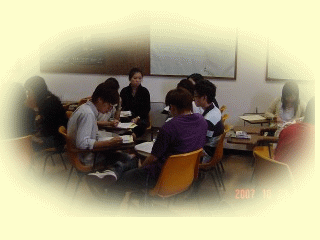
Home > Contents > Session Four
Session Four: Physical and cognitive development of adolescents
What are the implications of physical and cognitive development for adolescents and their teachers? - Understanding adolescents' physical and cognitive development
- Biological changes, sexuality and gender roles in adolescence
- Cognitive changes from developmental perspectives (e.g. Piaget & Vygotsky)
- Implications for guiding adolescents
![]()
At end of the session, the participants will be able to: |
Task: How do physical changes affect teens? (see above)
Example: (The task below is just selected from those tasks assigned in the Learning Guides.)
During the teen years, adolescents experience changes in their physical development at a rate of speed unparalleled since |
b. Is body image becoming a common problem in Hong Kong adolescents? c. Why might body dissatisfaction be greater among adolescent girls than boys?
d. Is this phenomenon biological, sociocontextual, or a combination of both?
e. What can you do? List all the
specific things you believe adults can do to be supportive.
References (see above)
Further readings and resources:
| 1. | Lau, S. (Ed.) (1996). Growing up the Chinese way: Chinese child and adolescent development. Hong Kong: The Chinese University of Hong Kong Press. |
| 2. | Lam, T. H., Shi, H. J., Ho, L. M., Stewart, S. M., & Fan, S. (2002). Timing of puberty maturation and heterosexual behavior among Hong Kong Chinese adolescents. Archives of Sexual Behavior, 31(4), 359-366. |
| 3. | Useful websites: |
http://www.hku.hk/life (which provide links to many useful websites on guidance & life skills development) |
|
| 4. | Video Recording and VCD (Available in HKU Library) |
Star Wars, Episode II-Attack of the clones |
